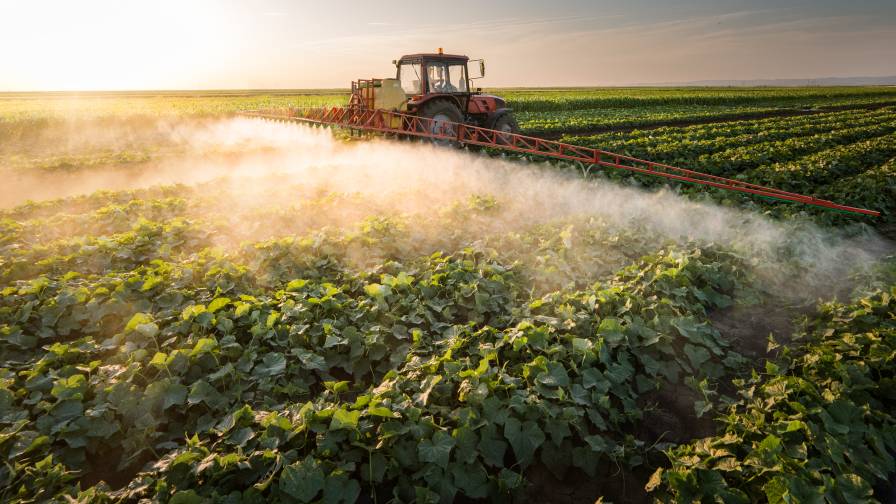Southeast Asia: The Rice Economy
Southeast Asia should be a bastion of agricultural free trade next year. The Association of Southeast Asian Nations’ Free Trade Area-Common Effective Preferential Tariff scheme (AFTA-CEPT) will reduce or eliminate taxes on a range of agricultural goods. Currently, taxes on corn and sugar are at or near 30% for some counties. The initiative will reduce tariffs to 5% or less beginning in 2010, which is the pre-determined deadline for such reductions. Most agricultural commodities, including rice, are part of the program.
Countries that agree to reduce tariffs are Brunei, Indonesia, Malaysia, the Philippines, Singapore and Thailand. In addition, Papua New Guinea and East Timor regularly observe schemes that come out of ASEAN agreements, and countries scheduled to join in 2012 are Myanmar, Cambodia, Laos and Vietnam.
Export commodities are a crucial economic accelerant for Southeast Asia, especially during a time when much of its GDP is shifting from agriculture to the service sectors. Agriculture exports are widely seen as a vehicle for GDP growth and prosperity, especially for the region’s poorest residents, many of whom work in agriculture.
Another macroeconomic event affecting the region is the quest for more ethanol usage by different regional governments. Opportunities could exist for crop production companies as countries increase their sugarcane production or import more sugarcane from countries that already export ethanol to Asian markets. To help meet the demand, the Japanese government is researching which feedstocks it might be able to use to produce ethanol, and that infrastructure and technology likely will make its way to the rest of the region. However, much of the region lacks the refining capacity to process enough ethanol to meet the demand, so investment in infrastructure must take place to avoid the long-term importation of refined ethanol.
Agriculture in Thailand has been expanding rapidly since the 1970s, and it has developed as a prominent exporter of rice, vegetable oils and sugar for ethanol. It is considered a major producer of rice along with India, Indonesia and Vietnam, and it has become the world’s No. 1 exporter of rice. Despite recent contractions in production, long-term growth will be fueled by these major players.
Thailand, the world’s seventh-largest food and agriculture supplier, harvested about 10.7 million hectares of rice in 2007, which produced 32.1 million tonnes of rice/paddy, according to the Food and Agriculture Organization of the United Nations.
And those numbers are expected to rise to fill demand left by fewer exports by India. Thailand’s exports of non-basmati rice grew to a great degree in African markets traditionally supplied from growers in India, according to the US Department of Agriculture. India has imposed a non-basmati rice exports ban to manage rising inflation. Thailand should further benefit in 2009 as speculators create volatility in rice prices due to India’s lockdown. An agriculture minister was quoted at presstime saying that Thailand could set a benchmark price of US$294 per tonne for white rice paddy under a new subsidy scheme it will introduce for the main 2009/10 crop. That price would be equivalent to an export price for milled rice of around $550 per tonne, below the current level for benchmark 100% B grade white rice, which is about $590 per tonne.
The subsidy is intended to generate a 30% profit for farmers. Unlike grain stocks in the rest of the world, Thailand is estimated to hold the equivalent of 6 million tonnes of milled rice, a record high. That is hanging over the market and adding to the downward pressure on prices, one of the reasons why the government is bringing in a new plan. The policy is expected to bolster production by 8 to 9 million tonnes of paddy in the 2009/10 crop, according to Agriculture Ministry data.
The largest economy in Southeast Asia is expected to grow almost 4% in 2009 and more than 5% next year, according to Indonesia’s finance minister. And much of its growth will be centered on its agriculture. Agriculture accounts for about 14% of GDP (2007) with annual growth of about 3.5%, according to the World Bank. Like many developed nations, the total GDP comprised by agriculture has declined significantly in the 1980s, when agriculture constituted about one-quarter of GDP.
But agriculture is still a way of life for almost half of Indonesians; the industry employs more people than any other sector, accounting for 44.3% of the 95 million-strong workforce. Major agricultural products include rice, palm oil, tea, coffee, spices and rubber.
Like much of Southeast Asia, the country’s rice crop is contingent on weather and rain. Just 12.5% of the country’s farmland is irrigated. Subsequently, weather phenomenon can influence yield and quality to a great degree. The agriculture minister said in late July he expects medium-quality rice production to dip slightly next year due to late planting as a result of the El Niño effect, and has urged farmers to plant wetland areas to mitigate the effects of the anticipated drought. He predicted that this year’s third and last planting season, mostly on Java, would be delayed to November or December, about two months later than usual, because of lack of rainfall. As a result, national output would fall by about 1.6 million tonnes next year, or 2.6% of this year’s anticipated output of 62.5 million tonnes — the most productivity of any country in the region.
Exports of farm products in the Philippines are likely to increase by 18% to $4.5 billion this year from $3.8 billion last year, Agriculture Assistant Secretary Salvador S. Salacup said in late July. Much of the gain is on processed foods, such as dried mangoes, banana chips, and puree or fruit concentrates, but exports of fresh coconuts, bananas, and pineapples are also on the rise. Agriculture accounted for 13.5% of the country’s total GDP in 2007, according to the World Bank, down from previous years. But it is expected to grow about 3.5% annually. The islands’ major crops include rice, corn, sugarcane, coconut, abaca and tobacco. Rice is the most important source of food along with corn; and coconuts, mangos, watermelons and other native fruits are important contributors to the nation’s income.
The republic is also pursuing an aggressive export campaign for its mangos, the market for which is expected to grow 10% during the next couple years. Last year, the Philippines exported 20,824 tonnes of fresh mangoes worth $19.5 million. Dried mango exports reached 1,028 tonnes valued at $7.5 million, while processed mango exports totaled 11,334 tonnes worth $13.7 million.
Okra production — valued at $10 million this year — could rise in the Philippines due to demand from Japan. Japan will relax its pesticide residue inspections beginning in late 2010. Currently, Japan inspects every shipment for residue levels, but it will convert its policy to random checks next year. The move is expected to bolster exports of okra about 10%. The Philippines currently supplies about 4% of Japan’s okra.
Another opportunity in the Philippines could be ethanol. The government enacted a mandate that refineries begin blending at least 5% ethanol into fuel supplies beginning early next year. However, only a couple refining facilities exist, which are insufficient to meet demand. For now, the country is importing ethanol mainly from Brazil. Sugarcane could become an important crop for the region.
The Philippines is examining other commodities to trade with Brazil as well. Bilateral trade reached $1.1 billion between the two countries in 2008, and agriculture product exchanges are expected to accelerate in the coming years.
Malaysia’s palm oil production is on track this year to exceed last year’s record 17.7 million tonnes. The government in April forecast 2009 output of 18.3 million tonnes. But output next year could shrink by between 5% and 15% if the El Niño weather pattern manifests as severely as some predict. Malaysia is the second-largest palm oil producer in the world, and it is aggressively seeking new markets for its exports, specifically Morocco, Turkey and the US.
Malaysia is also a major importer of rice; it buys about 600,000 tonnes of rice every year from Thailand, Cambodia, and Vietnam. But it is shifting its purchasing to countries that have surpluses and excess inventories, specifically Indonesia and South Sulawesi, according to Plantation Industries and Commodities Minister Bernard Dompok.
In Vietnam, shipments of rice could rise as much as 25% this year on a bumper crop in the country’s largest growing area, according to the agriculture department. The country could ship as much as 6 million tonnes, according to the Vietnamese Ministry of Agriculture and Rural Development, compared to 4.7 million tonnes in 2008. Total production is estimated to reach about 21 million tonnes this year.
Exports of pepper will also increase to as high as 110,000 tonnes this year, according to the Vietnam Pepper Association. Vietnam, the world’s biggest pepper producer, shipped 90,000 tonnes of pepper last year, 8.2% higher than the previous year, according to the General Statistics Office in Hanoi, showing a continuous upward trend.






